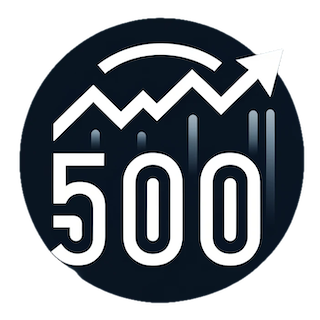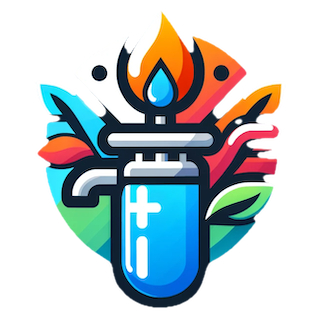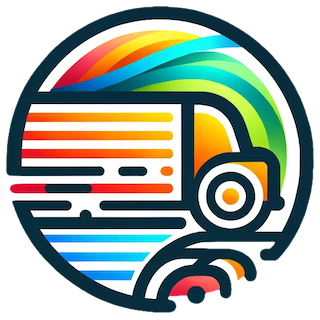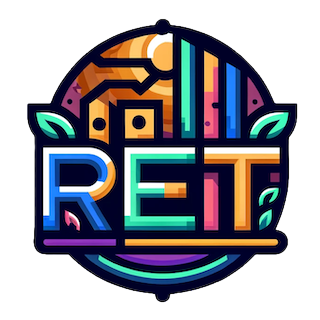Take a moment to observe a crowd. Notice how many are absorbed in their electronic devices, heads bowed. It’s a common sight, but it doesn’t have to be the norm. Imagine you’re on a long journey, eyes fixed on the road, yet feeling out of touch with important updates and news. This scenario, too, can be different. Introducing YakYak Reports: the solution to staying informed and connected, effortlessly and hands-free.
As an Amazon Associate, at no additional cost to you I earn from qualifying purchases. If you don’t see Amazon product images on this page, or the ads seem incomplete, click here.
About YakYak Reports

 A YakYak Report is an audio brief covering specific topics, ideal for multitasking or when reading isn’t practical. These reports are either real-time or use the latest data, offering a hands-free listening experience. Currently, they’re accessible via a web or smartphone interface.
A YakYak Report is an audio brief covering specific topics, ideal for multitasking or when reading isn’t practical. These reports are either real-time or use the latest data, offering a hands-free listening experience. Currently, they’re accessible via a web or smartphone interface.
Five Things Finance
 The Five Things Finance Report begins with a daily CNBC market summary. This original report is too lengthy, so we use ChatGPT to condense each topic into a summary of 1200 characters or less. This process can be challenging due to ChatGPT’s occasional busyness, network errors, or difficulty in sufficiently shortening the report. We repeatedly use ChatGPT until the desired length is achieved. For the full report, visit CNBC.com.
The Five Things Finance Report begins with a daily CNBC market summary. This original report is too lengthy, so we use ChatGPT to condense each topic into a summary of 1200 characters or less. This process can be challenging due to ChatGPT’s occasional busyness, network errors, or difficulty in sufficiently shortening the report. We repeatedly use ChatGPT until the desired length is achieved. For the full report, visit CNBC.com.
S&P 500 Report
 The S&P 500, a key indicator of U.S. large cap stocks, comprises 500 top companies across major industries, representing 75% of the publicly traded equities on the NYSE and NASDAQ. Note that this price index excludes dividends. This report analyzes the S&P 500’s performance over 7 days, 14 days, 2 months, and 6 months, providing a concise overview of market trends.
The S&P 500, a key indicator of U.S. large cap stocks, comprises 500 top companies across major industries, representing 75% of the publicly traded equities on the NYSE and NASDAQ. Note that this price index excludes dividends. This report analyzes the S&P 500’s performance over 7 days, 14 days, 2 months, and 6 months, providing a concise overview of market trends.
Dow Jones Utility Average
 Created in 1929, the Dow Jones Utility Average was originally made up of 18 utility stocks, it currently has 15. The companies are: AES, American Electric Power, American Water Works, CenterPoint Energy, Consolidated Edison, Dominion Energy, Duke Energy, Edison, Exelon, FirstEnergy, Nextera, NiSource, PG&E, Public Service Enterprise, Southern Company, This information is reproduced with permission.
Created in 1929, the Dow Jones Utility Average was originally made up of 18 utility stocks, it currently has 15. The companies are: AES, American Electric Power, American Water Works, CenterPoint Energy, Consolidated Edison, Dominion Energy, Duke Energy, Edison, Exelon, FirstEnergy, Nextera, NiSource, PG&E, Public Service Enterprise, Southern Company, This information is reproduced with permission.
Dow Jones Transportation Average
 The Dow Jones Transportation Average (DJTA) is a price-weighted average of 20 US transportation stocks. In fact, having been first created back in 1884 by Charles Dow, it is the oldest US stock index. Originally made up of only railroad stocks, the average now includes: Alaska Air, American Airlines, Avis Budget, CH Robinson, CSX, Delta Air Lines, Expeditors, FedEx, JB Hunt Transport, JetBlue, Kirby, Landstar System, Matson, Norfolk Southern, Old Dominion, Ryder System, Southwest Airlines, Union Pacific, United Airlines, UPS, This information is reproduced with permission.
The Dow Jones Transportation Average (DJTA) is a price-weighted average of 20 US transportation stocks. In fact, having been first created back in 1884 by Charles Dow, it is the oldest US stock index. Originally made up of only railroad stocks, the average now includes: Alaska Air, American Airlines, Avis Budget, CH Robinson, CSX, Delta Air Lines, Expeditors, FedEx, JB Hunt Transport, JetBlue, Kirby, Landstar System, Matson, Norfolk Southern, Old Dominion, Ryder System, Southwest Airlines, Union Pacific, United Airlines, UPS, This information is reproduced with permission.
Wilshire US Micro-Cap
 The Wilshire US Micro-Cap Price Index includes all securities smaller than the 2,500th largest stock in the Wilshire 5000 by market capitalization. Adjusted by weight, the index includes 26% health care stocks, 25% financials, 11% Industrials, 9% Information Technology, 9% Consumer Discretionary, 6% Energy, 4% Materials, 4% Real Estate, 3% Communication Services, 2% Consumer Staples and 1% Utilities. This information is reused with permission.
The Wilshire US Micro-Cap Price Index includes all securities smaller than the 2,500th largest stock in the Wilshire 5000 by market capitalization. Adjusted by weight, the index includes 26% health care stocks, 25% financials, 11% Industrials, 9% Information Technology, 9% Consumer Discretionary, 6% Energy, 4% Materials, 4% Real Estate, 3% Communication Services, 2% Consumer Staples and 1% Utilities. This information is reused with permission.
Wilshire US REIT
 The Wilshire REIT Index is a subset of the Wilshire Real Estate Securities Index. These indexes serve as proxies for direct real estate investing by excluding securities whose value is not always tied to the value of the underlying real estate. The company must have a minimum total market capitalization of at least $200 million, and is removed if the total market capitalization falls below $100 million for two consecutive quarters. The sector classifications break down as follows: Industrial 20%, Apartments 15%, Self Storage 13%, Datacenters 13%, Health Care 11%, Manufactured Homes 8%, Office 7%, Regional Malls 6%, Hotels 4%, Diversified 3%, This information is provided with permission.
The Wilshire REIT Index is a subset of the Wilshire Real Estate Securities Index. These indexes serve as proxies for direct real estate investing by excluding securities whose value is not always tied to the value of the underlying real estate. The company must have a minimum total market capitalization of at least $200 million, and is removed if the total market capitalization falls below $100 million for two consecutive quarters. The sector classifications break down as follows: Industrial 20%, Apartments 15%, Self Storage 13%, Datacenters 13%, Health Care 11%, Manufactured Homes 8%, Office 7%, Regional Malls 6%, Hotels 4%, Diversified 3%, This information is provided with permission.
Bitcoin Report
 The Bitcoin Report is created on demand and is accessible 24 hours a day 7 days a week. We pull Bitcoin metrics from Coingecko.com and then interpret the results. The report states the price and the volume then looks at volume over the last 24 hours in order to get a feel for market momentum. It should be expanded to look at volume over longer periods of time and should also give an indication of performance, perhaps by stating the time between blocks. What do you think?
The Bitcoin Report is created on demand and is accessible 24 hours a day 7 days a week. We pull Bitcoin metrics from Coingecko.com and then interpret the results. The report states the price and the volume then looks at volume over the last 24 hours in order to get a feel for market momentum. It should be expanded to look at volume over longer periods of time and should also give an indication of performance, perhaps by stating the time between blocks. What do you think?
Ethereum Report
 The Ethereum Report is created on demand and is accessible 24 hours a day 7 days a week. We pull Ethereum metrics from Coingecko.com and then interpret the results. The report states the price and the volume then looks at volume over the last 24 hours in order to get a feel for market momentum. It should be expanded to look at volume over longer periods of time and should also give an indication of performance, perhaps by stating the time between blocks. What do you think?
The Ethereum Report is created on demand and is accessible 24 hours a day 7 days a week. We pull Ethereum metrics from Coingecko.com and then interpret the results. The report states the price and the volume then looks at volume over the last 24 hours in order to get a feel for market momentum. It should be expanded to look at volume over longer periods of time and should also give an indication of performance, perhaps by stating the time between blocks. What do you think?
Crypto Fear & Greed
 Crypto market behaviour can be very emotional. People tend to get greedy when the market is rising which results in the fear of missing out. People often sell their coins in an irrational fear of seeing red numbers. There are two main assumptions:
Crypto market behaviour can be very emotional. People tend to get greedy when the market is rising which results in the fear of missing out. People often sell their coins in an irrational fear of seeing red numbers. There are two main assumptions:
- Extreme fear can be a sign that investors are too worried. That could be a buying opportunity.
- When Investors are getting too greedy, that means the market is due for a correction.
The index is calculated from the current sentiment of the Bitcoin market by crunching the numbers into an index from 0 to 100, Zero means “Extreme Fear” while 100 means “Extreme Greed”.
There are 6 factors making the index:
- Market Volatility 25%, We compare current volatility and max draw-downs of bitcoin to average values over the last 30 and 90 days,
- Market Momentum and Volume 25%, current market momentum in comparison with 30/90 day average values,
- Social Media 15%, We count posts on various hashtags and check how fast and how many interactions they receive,
- Surveys 15%, Together with strawpoll.com, we look at weekly crypto polls,
- Dominance 10%, The dominance of a coin resembles the market cap share of the whole crypto market,
- Trends 10%, We pull Google Trends data for various Bitcoin related search queries.
You can find out more at alternative.me/crypto.
But what can YakYak Reports do? What are the limitations?
The foundation that is in place is formidable. The framework has a plug-in capability. Put a file in the “reports” directory, perhaps written with ChatGPT or handwritten, and you are done, the report functions and appears on the main page. Want a details page? Add another file and yet another report is complete. You can scrape data off any page on the Internet (with permission), massage it AI, augment it wit AI, reduce it with AI, fact check it with AI, and by this time you may have something totally original that is tailored specifically for your needs. You can literally close your eyes and YakYak will speak the report to you. This can be done totally off-grid or in the cloud. The computers can run on solar power and batteries or operate in a grid-tied data center. The limitations are what they always are, not on the technology but the quality, and how information is shared or not shared, per the current trend. Garbage in, garbage out, good in, good out, great in, great out!
A Look At The Big Picture
The system begins with audio inputs, which are converted into text through a speech-to-text module. This module serves as an interface for interpreting spoken words into written text. Additionally, the system receives inputs from an application or web user interface, which provides another mode of interaction.
Once the text is obtained either from the speech-to-text conversion or the application/web UI, it enters the intent reasoning module. This critical component analyzes the text to understand the user’s intent or query.
The intent reasoning module then interacts with ChatGPT. This interaction involves sending processed queries or intents to ChatGPT and receiving responses or further information. There is a feedback loop between ChatGPT and the intent reasoning module, allowing for a dynamic exchange that refines the responses or queries.
Another key part of the system is a module referred to as GROC, which has a bidirectional relationship with the intent reasoning module. The exact function of the GROC module isn’t specified, but it likely involves additional processing or decision-making based on the user’s intent.
flowchart LR
A[Audio in] -->B(Speech to text) --> C(Intent reasoning)
A[Audio in] -->B
J[App/Web UI] -->C
J[App/Web UI] -->C
C--> Z[ChatGPT]
Z--> C
C--> X[GROC]
X-->C
From the intent reasoning module, there are two parallel paths of operation. One path leads to an automation process, which, based on the understood intent, performs certain tasks automatically. The other path involves the generation of reports related to the user’s queries or actions.
Finally, both the automated responses and the generated reports are converted into audio outputs through a text-to-speech module. This module vocalizes the text content, providing an audible response or report to the user.
Overall, the system integrates voice and text inputs, processes them for intent and content, interacts with advanced AI modules like ChatGPT, and delivers audio outputs, either as direct responses or as comprehensive reports based on the user’s needs.
flowchart LR
E(Intent reasoning) -->F(Automation) -->G(Text to speech)
E -->H(Report generation) -->G
G -->I[Audio out]
G -->I[Audio out]
How YakYak Reports Fit Into The Big Picture
The YakYak Reports system primarily operates through an application or web user interface. This interface is the primary entry point for users to interact with the system.
When a user engages with the system through the app or web UI, their input is directed to the intent reasoning module. This module plays a crucial role in understanding and interpreting the user’s input. It analyzes the text provided by the user to discern their specific needs or queries.
Once the user’s intent is identified and processed, the system moves to the text-to-speech module. This module converts the processed information or response into spoken words. It acts as a translator, turning text data into audible content.
flowchart LR
AA[App/Web UI] -->BB(Intent reasoning) -->CC(Text to speech) -->DD[Audio out]
AA -->BB
CC -->DD
The final step in the workflow is the audio output. The audio generated by the text-to-speech module is delivered to the user. This output could be in the form of answers, information, or reports based on the user’s initial input through the app or web UI.
In summary, the YakYak Reports system is a streamlined process that begins with user input through an application or website, processes this input to understand intent, converts the processed information into speech, and finally outputs this as audio for the user. The system is designed to be user-friendly and efficient, providing a seamless experience from user query to audio response.
Conclusion
More building blocks are getting into place. Stay tuned for future developments.
